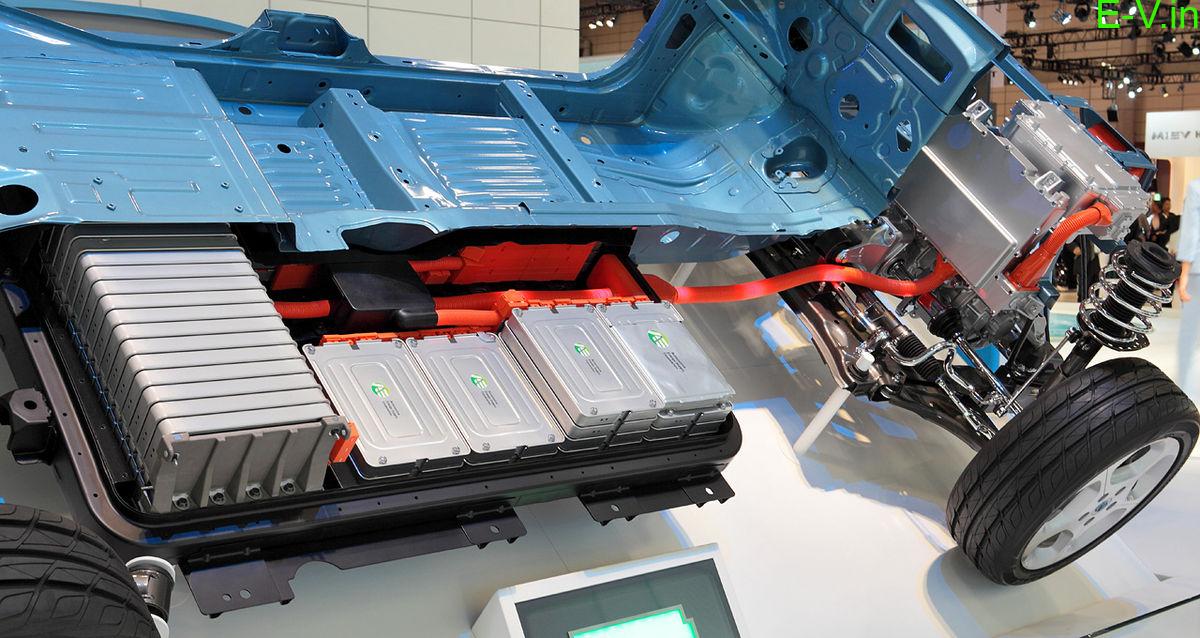
Climate impact of lithium-ion batteries & how to measure it
Lithium-ion batteries are something which everyone prefers over lead-acid batteries, since the last ten years its been seen used mostly mobiles to every electronic appliance. Now it is playing an important role in the world’s decarbonisation and reduction of greenhouse gases (GHG). Most importantly at present, it is playing an important role in electrifying vehicles including cars, buses, trucks and ferries and in electric bikes, scooters and autonomous robots. It has become a cleaner energy storage solution. Read further to know more about the climate impact of lithium-ion batteries.
Climate impact of lithium-ion batteries
Lithium-ion battery production
The production of a battery cell will need as many as 20 different materials from around the world. However, electric vehicles basically are emission-free at least when they are powered by electricity generated from renewable sources such as wind, solar, etc. They still cause an impact on climate by the manufacturing of the car and not least the battery. To produce the batteries, the battery materials are mined and refined, its cells, modules are manufactured which results in the need for the huge energy which generates GHG emissions on higher amounts which are affecting the climate. In simple words, the emissions are moved from one pipe to another which will need new regulations.
The Transport & Environment study has discussed the potential ways of measuring, comparing and limit GHG emissions from batteries, as well as proposing tools. We will be looking at some of them in this article.
40 kWh battery EV is equal to diesel car
The batteries for electric vehicles and for other appliances cells are assembled in modules and packs which depends on what materials these are made of and how they are manufactured, also affect the battery’s CO2 footprint and climate impact. The study shows, if an electric vehicle is using a 40 kWh battery its embedded emissions from manufacturing would then be equivalent to the CO2 emissions caused by driving a diesel car with fuel consumption of 5 litres per 100 km in between 11,800 km and 89,400 km before the electric car even has driven one meter.
The analysis focuses on the material production and the manufacturing of the battery but not the actual use, nor a second life or the effect of recycling. This means a battery’s CO2 footprint will be regarded the same no matter if it will allow 500 charge and discharge cycles or 5,000.
Energy used in the battery value chain
A lithium-ion battery can be divided into three main components
- the cells
- the battery management system
- the pack
A supply chain that starts with mining and material extraction to then continue with conversion and refining of the materials and producing of battery chemicals, cells and pack. As much as 75 per cent of energy consumption from a battery comes from the cells.
The first significant step is found in the mining, conversion and refining step of the active materials where nickel, manganese and cobalt are processed into sulphates and lithium either into lithium hydroxide or lithium carbonate. This process consumes 20 per cent of the total energy used for the cell or nearly 16 per cent of the whole battery.
Argonne cobalt sulphate is consuming twice as much energy as nickel sulphate and almost nine times as much as Manganese sulphate which would indicate that for instance, a lithium manganese oxide battery would consume considerably less energy.
The largest climate impact of the cell does however come from the synthesising of the precursor and lithium compound, either lithium carbonate or lithium hydroxide, into cathode powder.
Climate impact of the battery supply chain
However this is all about the production side, but let us look into the climate impact of the battery supply chain now. At current, the battery value chain is all global and often including all production on populated continents. Therefore the source energy is very different in the various steps of the value chain depending on where the materials are being produced. Local levels also face differences.
The study suggests the companies have different strategies for what energy sources they are using for heat and it can be supplied indirectly through electricity or directly by using fuel such as natural gas.
They can also opt to actively source energy from specific generation modes through agreements with their energy supplier, such as “green power” or they themselves can also generate the energy by y building microgrids with solar or wind power.
The most important matter here is the heat is supplied from electricity or fuel have a significant impact. As per the n Argonne’s study, almost 60 per cent of the energy was supplied by fuels and only 40 per cent of the production is affected by the energy mix in electricity. So it becomes very important to track the individual production sites.
For example, as per the Argonne’s latest update of GREET the assumption is that both NCM111 precursors and the rest of the battery are produced in the United States with electricity from the national grid mix, although the site data is taken from Chinese plants. Also, the aluminium, which has a high relative impact, is assumed to be sourced from the US while most of the raw materials for the cathode and anode are sourced from where the production is concentrated such as Chile, DRC, Finland, China and Australia. The result is a total of GHG emissions from an NCM 111 battery of 73 kg CO2e/kWh.
If the same battery would produce in Europe the CO2 impact would likely have been smaller. As the average energy mix in Europe is less carbon-intensive primarily as it has a high share of hydro and nuclear power.
Transporation emissions
In the Climate impact of lithium-ion batteries, another emission contributing factor is transportation. It highly depends on the productions sites and the destination of the battery and what mode of transportation is used and what kind of energy the vehicle is using. According to the study by Kim et al cells are transported from South Korea to Michigan in the United States which causes extra GHG emissions of 4.1 kg CO2e/kWh. Therefore it is clear that the battery’s or cell’s energy becomes very important as this determines how many kWh that can be shipped per kg CO2e/tonne-kilometre.
Recycling and second life
- Potential to decrease the CO2 impact
- Helps in the production of new batteries with the already extracted material available
- Avoiding the processing of new raw materials
- The use of recycled materials can decrease the energy demand in material production by 48 per cent
In the climate impact of lithium-ion batteries, the recycling process is very important and direct recycling is the best option for it. Direct recycling involves the cathodes and anodes retain their composition followed by different types of hydro metallurgic processing. Pyrometallurgy, primarily smelting, is regarded as a method that generates more GHG emissions than it saves.
Second life
Second life is the use of batteries after they have been deemed not fit for their original purpose. But still, the second life can contribute to a longer life and can be used for higher rates. The second life batteries can save between 15 and 70 per cent of the cumulative energy demand and GHG emissions can be saved.
CO2 footprint from batteries
The embedded emissions from a battery can be measured in two different ways when doing a life cycle analysis is top-down or bottom-up. A bottom-up approach is more accurate as it measures the energy consumption as close as possible to the component, for example, e the energy consumption of a furnace or heating equipment for a dry room, divided by the actual output.
Three variables are needed for the correct measurement of GHG emissions
- Total energy used for each activity in the value chain over a specific period of time (MJ/kWh)
- The source of energy for each activity during the specific period of time (CO2e/MJ)
- The actual throughput during the specific period of time (units or kg or kWh/MJ)
The batteries in the future will be produced in significantly larger production units. The average capacity of the 70 largest current and planned battery factories in 2028 will be more than 20 GWh of which some factories will have production capacities exceeding 60 GWh.
The market for lithium-ion batteries in India
The market for lithium-ion batteries in India is expected to grow at a CAGR of 34.8% during the forecast period of 2019-2014. As per the JMK Research, the lithium-ion battery market in India is expected to increase from 2.9 GWh in 2018 to about 132 GWh by 2030 at a CAGR of 35.5%. The increasing volume of lithium-ion batteries, would, in turn, lead to a growing capacity of ‘spent’ batteries in the ecosystem. The annual recycling market is expected to be around 22-23 GWh, which is a $1,000 million opportunity.
The research says that the estimated recycling market in India will slowly start in 2022 when present batteries which are in use in electric vehicles would reach their end of life. However industrial recycling of lithium-ion batteries is done mainly in the European Union and China. The market is still in its infancy. As India is heavily dependant on battery metals imports is one of the main reason that India is still not a scale manufacturer of lithium-ion batteries. Many companies in India have already started looking at this opportunity and have also set up or announced their plans to set up recycling operations.
Also, read related article: Battery capacity needs to power EVs in India from 2020 to 2035
If you are an EV manufacturer or EV Dealer or EV Supporter who want to share news related to electric vehicles on our website, please send an email to crm@electricvehicles.in
For the latest electric vehicles news, follow electricvehicles.in on Twitter, Instagram, Facebook and our YouTube Channels English, Hindi, Telugu and Tamil







